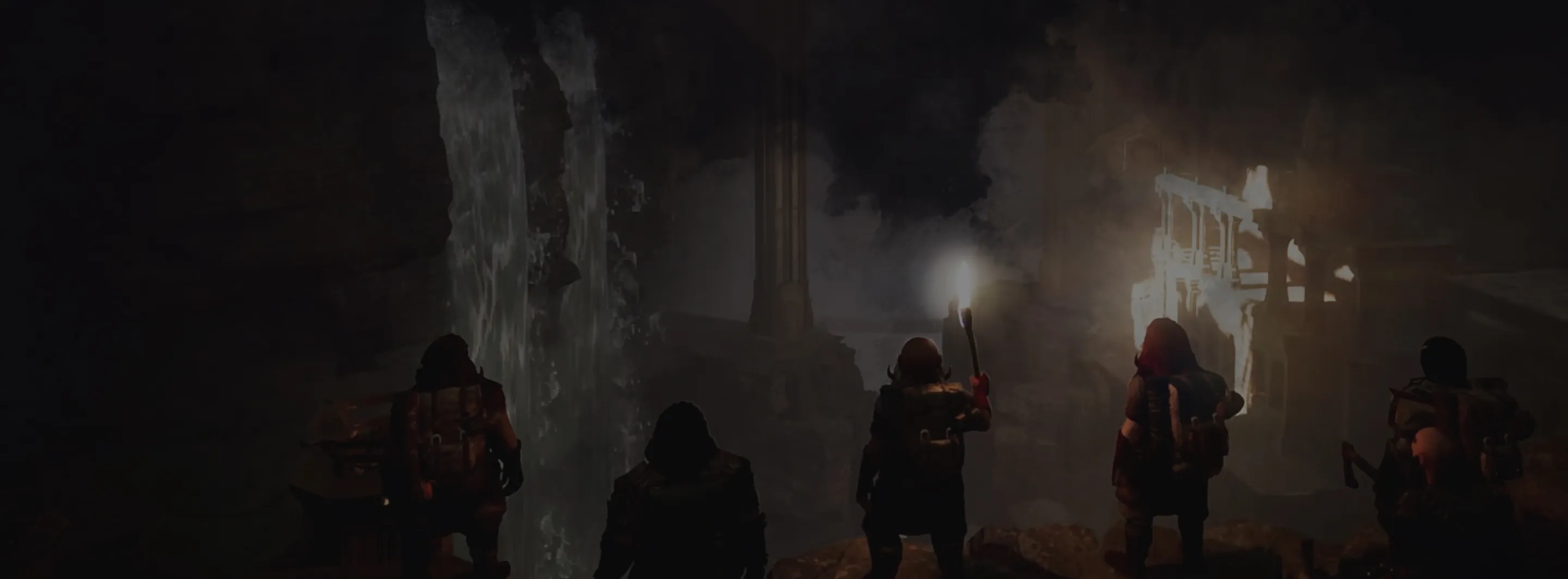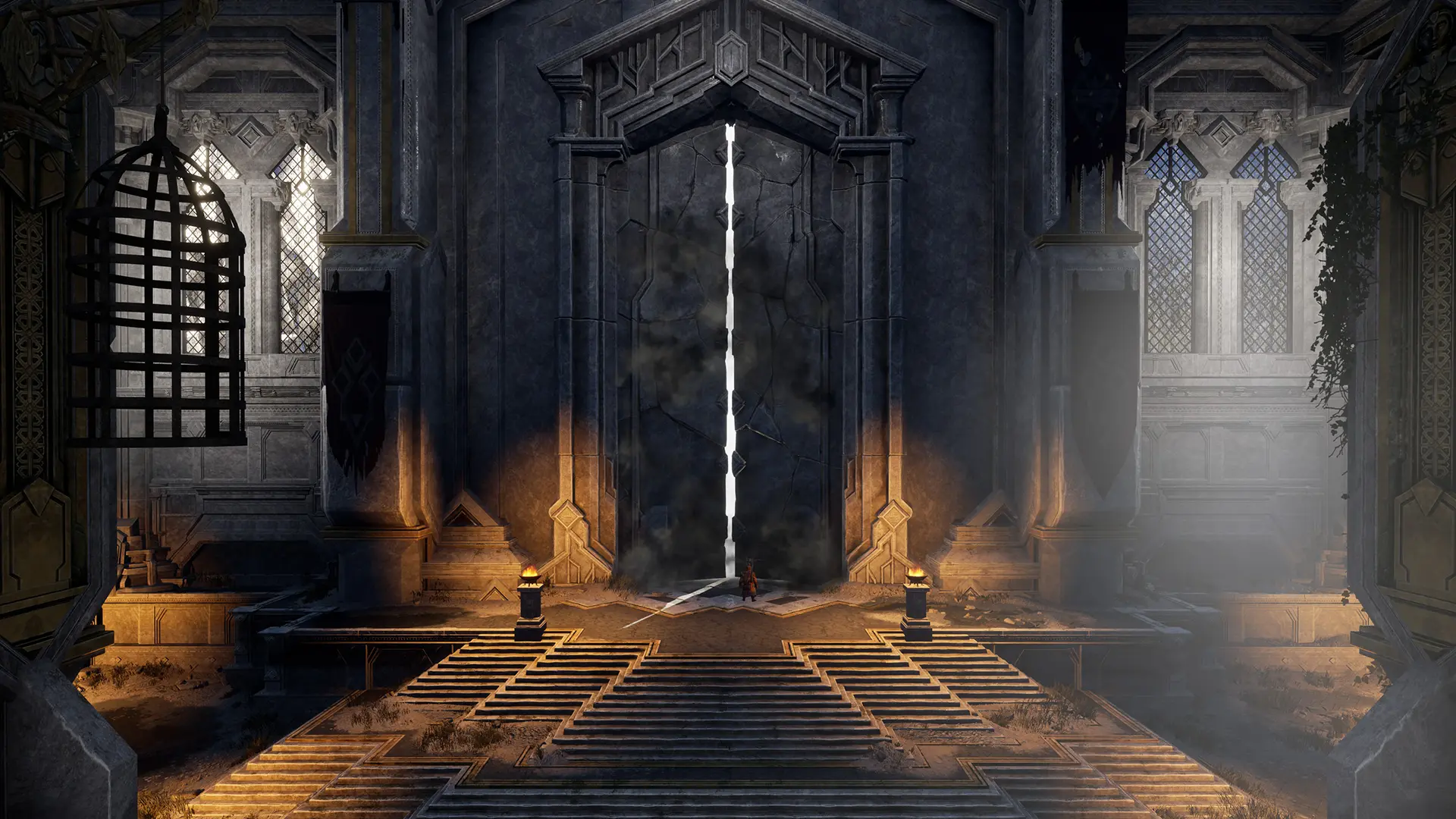Blog: Bringing Orcs to Life

01/19/2024
Written by Bradley Fulton, Art Director.
Creating Moria’s Orcs and Goblins
As the primary personification of evil, Orcs play a central role in the conflict of the Lord of the Rings trilogy, yet for all their importance, Tolkien provides us with surprisingly little in the way of physical description. Most of what we know about orcs is provided through their actions and words, and beyond a few specific features of their skin and faces, the particular details of their appearance are largely a matter of interpretation.
In the years following the original publication of the books, there have been many adaptations, derivative works, and re-interpretations, and each of these has filled in some of the gaps and provided fans of The Lord of the Rings with a general sense of what a true Orc looks like. One example of the way that subsequent adaptations have developed these concepts further than they are strictly provided in the books is the distinction that is generally made between Goblins and Orcs. From Tolkien’s perspective, these are one and the same creature, and the difference between the two terms is more a reflection of the language and culture of the speaker. One group of people might know them as “Orcs”, while another might use the term “Goblins”.
However, these days it is generally accepted that, while Goblins and Orcs are essentially the same creatures, Goblins are a smaller and weedier variant, while Orcs are bigger and stronger. We decided early on to preserve this distinction, as it is quite useful in game terms, and also provides a good basis for building more visual variety into our enemies.
Concerning Orcs
One of the essential truths of Middle Earth is that the foundation of the hero’s adventure is an elemental struggle of good versus evil. Dwarves, for instance, may embody a collection of virtues and vices all in conflict, yet are largely agents of good. Orcs, however, are unambiguously evil. This makes them wonderfully fun characters to design, and I knew from the beginning that the key to success would be to find the right crew of artists.
By this point in the project we already knew that our art style would be essentially realistic, but for our initial exploration, I wanted to find an artist with more of a cartoonist’s quality to their designs and their line work. I was confident that someone who naturally worked in such a style would quickly find the characters we were looking for, and this led me to the work of the wonderful Tim McBurnie. Tim’s characters have a playful quality that I felt would be really important to offset the grimness of our orcs, and right away it seemed pretty clear that he has drawn a goblin or two in his career!
Process
The first step in any new concept assignment is exploration. The goal here is to not be terribly concerned about finding final designs–in fact, you typically don’t want to latch on to any one idea too quickly. Instead, this is an exercise to find the boundaries of the space by making a few simple statements and then letting the artist’s imagination guide them. We knew, for instance, that we wanted the elf heritage of orcs to be apparent, so the pointed ears and relatively slender build was part of the initial brief. From there, it was a matter of creating a lineup of sketches with different proportions, silhouettes, textures, etc. and discussing what to keep and where to try ideas.


Within a few rounds of sketches, a population of prototypical orcs started to emerge, with long arms and torsos, relatively stumpy and misshapen legs, and a wide variety of delightfully evil faces full of character.
Orc Tribes
By this point our narrative team had already started to hammer the broad arc of the story into shape. We knew that we wanted players to encounter a variety of orc tribes over the course of their journey. This would add some variety to combat, give us a lever to increase difficulty as players progressed, and would bring more of the outside world of Middle Earth into Moria, thus connecting it more firmly to the setting.
For reasons of efficiency, all of the orcs in Moria share the same basic body. This simplifies the process of modeling and animating them, but it also means that their diversity is expressed through the armor they wear and the wargear they use. To visualize these tribes we brought in two more wonderful artists: Matteo Spirito and Massinissa Belabbas.
Native Orcs of Moria

The first tribe players encounter are the orcs that have dwelt within Moria since soon after the fall of Khazad-dum. These have been displaced from the eastern halls of the city by newcomers, so we wanted them to have a kind of rag-tag, refugee scavenger look to them. Their armor is patchwork and incomplete, covered in makeshift repairs.
Goblin Men of Isengard

In the Elven Quarter, players encounter an isolated group of Goblin-Men. These were creations of Saruman, having cross-bred humans and orcs during the War of the Ring. Most of his army was destroyed by Theodred at the Battle of the Hornburg, but a small number may have escaped justice and found refuge within the forgotten corners of Middle Earth.
Deep Orcs

In the deepest halls of Moria, where very little light finds its way into the gloom, isolation and deprivation have made the orcs that dwell there much more savage–almost feral. Here, the equip themselves with scraps from whatever hapless wanderers stumble down from above, but they make up for this with sheer ferocity.
Orcs of the Red Eye

In the early part of the Fourth Age, the eastern reaches have fallen under the dominion of the Red Eye. These orcs are the remnants of Sauron’s great army, fled from Mordor to find a new refuge from which they can watch and wait for (as they believe) his inevitable return. Unlike all other tribes in Moria, these orcs maintain some semblance of soldierly order, and are well-trained and well-equipped.
Gundabad Orcs

These are rangers and scouts, having come from far away Gundabad, and have found Moria to already be full of hostile tribes. These are raiders equipped for long patrols and lightning strikes.
Ghash Orcs

The last orcs that players encounter in the Mithril Deeps are more of a cult than a tribe. Their origins may be from any of the other orcish groups, but they have been enthralled by the Shadow Dragon, and now act as her agents across Moria. Many of them wrap themselves in the crumbling bones of Dwarves and other Orcs, and have a generally unsettling appearance that belies their madness.
Orcish Encampments
There are really two styles of Orc “towns”: the fortified encampments of the Red Eye, and the makeshift camps of all the other tribes. The guiding principle that unites both of these styles is the way they are fundamentally different from the constructions of the Dwarves. As the primary agents of evil, Orcs are a twisted reflection of the other races of Middle Earth. In this way, they embody everything that the others are not.

In this case, Dwarves are legendary craftspeople, dedicating generations of labor toward great works of architecture. The evidence of their craft is everywhere in Moria, so the architecture of the orcs (such as it is) is deliberately designed to clash with that. Where Dwarven walls are clean and straight, orcish walls are crooked and haphazard. Where Dwarven edifices demonstrate a knack for grand planning that will endure the ages, orcish buildings are makeshift and lazily-constructed, with the work done by unhappy laborers under the cruel watch of a taskmaster.
In this way, the Dwarvish and Orcish architecture act as layers of history that in their appearance tell something of the story of Moria.
Did you enjoy this article and want to hear more about the development of The Lord of the Rings: Return to Moria? Let us know in our community Discord!

Unite with Your Fellow Dwarves
Adventure awaits in our growing discord community. Join to discover all things Return to Moria.






